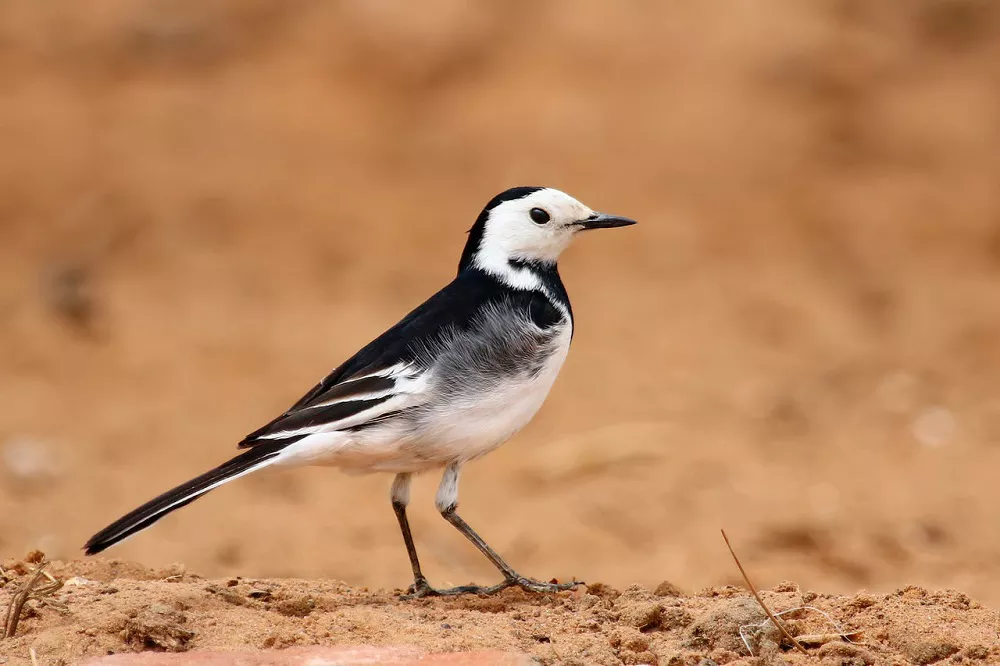Wagtails are a group of passerine birds that belong to the family Motacillidae. They are characterized by their long tails that wag up and down as they walk, hence the name “wagtail.” There are several species of wagtails, but two that are commonly seen in Europe are the pied wagtail and the white wagtail. While they may look similar at first glance, there are several key differences that set them apart.
Appearance:
Pied Wagtail: The pied wagtail (Motacilla alba yarrellii) is a small bird, about 18-19 cm in length, and is primarily black and white. The black plumage covers the head, throat, back, and wings, while the belly and underparts are white. The male has a black throat, whereas the female has a greyish throat. The pied wagtail has a distinctive white eyebrow and a black bib on its chest.
White Wagtail: the white wagtail (Motacilla alba) is also a small bird, about 16-19 cm in length, and is predominantly white with black markings. The black plumage covers the head, back, and wings, while the belly and underparts are white. The male has a black throat, whereas the female has a greyish throat. The white wagtail has a white eyebrow and a white throat, unlike the black bib on the chest of the pied wagtail.
Distribution and Habitat:
The Pied Wagtail and the White Wagtail have distinct geographical distributions and habitat preferences.
Pied Wagtail: The Pied Wagtail is primarily found in Europe, including the United Kingdom, and parts of Asia. It is a highly adaptable species, frequently observed in various habitats such as urban areas, gardens, parks, meadows, farmlands, riversides, and wetlands.
White Wagtail: The White Wagtail, on the other hand, has a broader distribution, extending across Europe, Asia, and parts of Africa. It can be found in diverse habitats, including grasslands, wetlands, farmlands, and urban areas. The White Wagtail is also known for its association with aquatic environments, often foraging near rivers, streams, and ponds.
Subspecies and Regional Variations:
Both the Pied Wagtail and the White Wagtail exhibit regional variations and subspecies that can further complicate their identification.
Pied Wagtail: The subspecies of the Pied Wagtail, Motacilla alba yarrellii, is primarily found in the British Isles and exhibits the characteristic black and white plumage.
White Wagtail: The White Wagtail (Motacilla alba) has a more extensive range, with numerous subspecies distributed across different regions. These subspecies may vary in plumage coloration, including gray, blue-gray, or even yellowish tones on the upperparts.
Behavior:
Both the pied wagtail and the white wagtail are highly active birds and are often seen running and hopping along the ground in search of insects and other small invertebrates. However, the pied wagtail is more likely to perch on buildings, trees, and other structures, whereas the white wagtail is more likely to perch on the ground or low vegetation.
Migration:
Both the pied wagtail and the white wagtail are migratory birds and breed in Europe and Asia. The pied wagtail winters in the UK and other parts of Europe, while the white wagtail winters in Africa and Asia.
In conclusion, while the pied wagtail and the white wagtail may appear similar at first glance, there are several key differences that distinguish them. These differences include their plumage, habitat, behavior, and migration patterns. By paying attention to these distinguishing features, birdwatchers and nature enthusiasts can easily tell the difference between the two species.


 Facebook
Facebook  Instagram
Instagram  Youtube
Youtube 